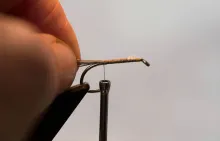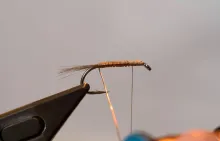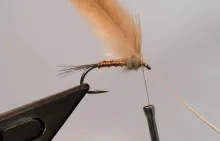Klympen is a simple and efficient fly for sea run browns, which should be able to catch many other kinds of fish. Originated by Henning Eskol, this fly has seen many variations since its birth.
You can get the truth in this story about the evolution of the fly.
This is one
of a bunch of flies used by my gang of Danish coastal anglers—a colorful group and a very peculiar group consisting of people with many years of experience between them. They tend to stay isolated and not make a big fuss, and also tend to keep their locations and their fishing experiences to themselves, and—not least—their flies.
This is the story
about one of these flies—Klympen. The originator, Henning Eskol tells:
- This fly was invented on the Danish island Bornholm and first saw water at the location called Klympen, hence the name.
He continues:
- I tend to smash a lot of flies into the rocks with my low backcasts, and because of this I wanted a pattern that could be tied in a short time. I also wanted a heavy fly, but first and foremost something durable and simple.
It since developed into one of Henning's favorite patterns, and he tied it in many variations of which we will cover a few here.
Henning tells:
- I first used a long tail of teal in combination with flash, but have since boiled that down to other materials and sometimes no tail at all.
A current favorite is a small orange version, which has proved to be a good autumn fly.
The hallmark
of the fly is the copper body, which consists of wire wound as a foundation and then wound on top of itself as a rib. With a bit of varnish (or even epoxy, Bug Bond or similar), this creates a solid, heavy and durable body. Apart from that the fly is basically a tail and a front hackle, and on many variations there isn't even a tail.
The copper body gives the fly mass and density, and is most likely one of the reasons for its success. It penetrates the surface easily and descends towards the bottom very rapidly, making it fish in deeper levels of the water than many of our usual coastal flies.
The variations are mainly some smaller tailless flies and some really bright and flashy orange ones. All have proven efficient, and all are quick and easy to tie and use few and common materials.
You can omit the varnish on the body, but the result is probably a fly that disintegrates quickly. The heavy copper will move on the hook shank when you cast the fly, get tarnished and/or brittle after just one trip in the water and very often break after touching rocks in the water or stones in the backcast.
Hennings own instructions
are very brief. You will find a more detailed set of tying instructions below.
1) I first cover the whole hook shank with tying thread. It's important with a good foundation for the copper wire, which has a tendency to move.
2) I tie in the tail.
3) Time for the copper in the full length of the fly.
4) If I have the time I varnish the copper before tying the thorax.
5) Thorax consists of SLF in a dubbing loop.
6) When the head has been varnished and you have admired the fly, it's time for big, bright fish!
He doesn't mention the front hackle or the double layer of copper (to the back of the fly and forwards again), but you get the idea. He sometimes also adds a bit of flash to the tail.
|
|
|
|
|
|
|
|
|
|
|
|
|
|
|
|
|
|
|
|
|
|
|
|
|
|
|
|
- Log in to post comments







































